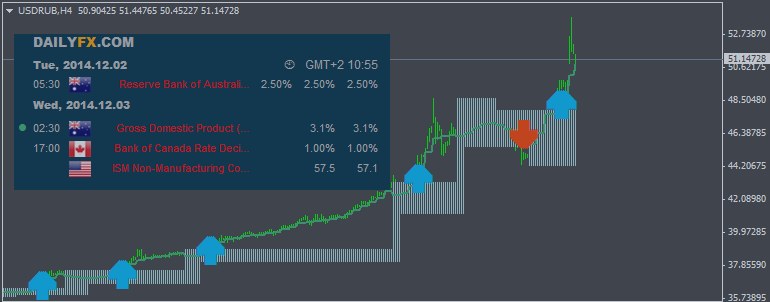
TRADING LESSON: How To Determine Where to Put Your Initial Stop Loss Order
4 December 2014, 03:11
0
336
50% or more of the trades made by many successful trading strategies are
losers. These trading strategies and traders are successful not because
they are highly accurate on a trade by trade basis, but because when
they are wrong they cut their losses quickly and when they are right
they let their profits run. While the trading strategy that you
eventually end up trading for yourself may have a higher success rate
than what I mention above, any strategy is going to have loosing trades,
so the first key to staying in the game is to have a plan for managing
those losses so they do not get out of control and wipe out your chances
for success.
With this in mind, what most traders will start with when designing a plan for setting their initial stop loss is the amount they can afford to loose on a per trade basis without having a detrimental affect on their account. While this varies from trader to trader and from strategy to strategy, as Dr. Alexander Elder mentions in his book Trading for a Living, many studies have shown that strategies and traders who risk more than 2% of their overall trading capital on any one trade are rarely successful over the long term. From what I have seen most traders risk way more than this on an individual trade basis, another large contributor to the high failure rate among traders.
Traders who set their per trade risk level at 2% of their trading capital or less, not only put themselves in a situation where a fairly lengthy string of losses will not knock them out of the game, but also put themselves in a situation where any one trade is not going to make or break their account. This is important not only from a money management standpoint but also from a psychological standpoint in that they are not attached to any one trade and are therefore more likely to stick to their strategy.
In order to have a true understanding of what this number should be for a specific strategy you will need to know what the expected accuracy rate is for the strategy, something which will cover in later lessons. For now however it is sufficient to simply understand that you need to have a feel for how much you plan to risk on a per trade basis as a first step in designing a successful money management strategy, and that you should be very wary of any strategy which risks more than 2% of your trading capital on any one trade.
Now that we understand that determining how much to risk per trade is the first step in any successful money management strategy, we can move on to other methods of setting your initial stop which fit within the limit set by the amount a trader is willing to risk on a per trade basis.
With this in mind, what most traders will start with when designing a plan for setting their initial stop loss is the amount they can afford to loose on a per trade basis without having a detrimental affect on their account. While this varies from trader to trader and from strategy to strategy, as Dr. Alexander Elder mentions in his book Trading for a Living, many studies have shown that strategies and traders who risk more than 2% of their overall trading capital on any one trade are rarely successful over the long term. From what I have seen most traders risk way more than this on an individual trade basis, another large contributor to the high failure rate among traders.
Traders who set their per trade risk level at 2% of their trading capital or less, not only put themselves in a situation where a fairly lengthy string of losses will not knock them out of the game, but also put themselves in a situation where any one trade is not going to make or break their account. This is important not only from a money management standpoint but also from a psychological standpoint in that they are not attached to any one trade and are therefore more likely to stick to their strategy.
In order to have a true understanding of what this number should be for a specific strategy you will need to know what the expected accuracy rate is for the strategy, something which will cover in later lessons. For now however it is sufficient to simply understand that you need to have a feel for how much you plan to risk on a per trade basis as a first step in designing a successful money management strategy, and that you should be very wary of any strategy which risks more than 2% of your trading capital on any one trade.
Now that we understand that determining how much to risk per trade is the first step in any successful money management strategy, we can move on to other methods of setting your initial stop which fit within the limit set by the amount a trader is willing to risk on a per trade basis.


